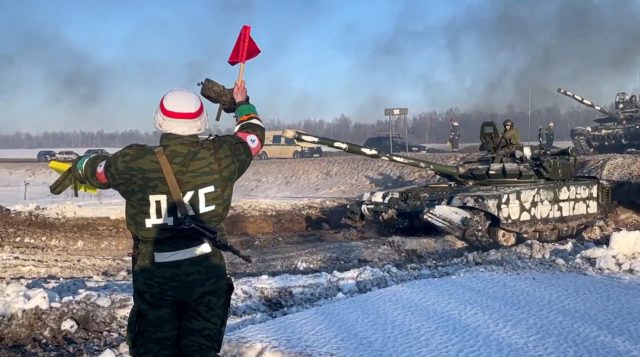By Camille Cox | Staff Writer
With Russian troops gathering at the Ukrainian border and the threat to create a major military conflict, President Joe Biden said at a press conference Tuesday that while Russian officials said they have pulled back, the threat of invasion remains at large.
According to NPR, Ukraine has over 100,000 Russian troops sitting at its border, ready to attack if sanctioned by the government. With a long battling history between the two countries, Ukraine has turned more toward the West and away from its once-mother country, Russia, following the dissolution of the Soviet Union in 1991.
“Ukrainians have turned away from Moscow and toward the West, with popular support on the rise for joining Western alliances like NATO and the European Union,” NPR said.
While Ukraine is not a NATO nation, the country has been seeking membership since 2008. NATO, or the North Atlantic Treaty Organization, has worked with Russia before on international issues but remains skeptical of the country due to its lack of transparency. Russia outwardly opposes a westward expansion of ideals, citing NATO as a proponent of this expansion and demanding it halt any expansion, including with Ukraine.
“In April 2021, as a response to Russia’s increased military build-up in and around Ukraine, Allies called on Russia to cease its provocations and to immediately de-escalate tensions on Ukraine’s borders and in illegally annexed Crimea,” NATO’s website reads.
In 2014, Russia invaded and illegally annexed the Ukrainian peninsula of Crimea. Following the invasion, Russia has continued to strike at Ukraine through cyberattacks and sent troops to the border in April 2021.
Peachtree City, Ga., freshman Julia Ash, who is originally from Ukraine, said she remains scared for her family still located in Eastern Ukraine and remembers that feeling of fear.
“I feel upset simply because I was one of the firsthand witnesses to the actual bombing and war, and I know exactly what it feels like to be scared to go to bed every night listening to those alarms for evacuation,” Ash said. “I feel upset, but at the same time, there’s only so much I can do, so I’ve been spreading the word around and telling people what the situation is really like.”
On Tuesday, Russian officials stated that troops have pulled back from the border, but Biden announced that the U.S. government remains skeptical of this announcement.
“We have not yet verified that Russian military units are returning to their home bases,” Biden said. “Indeed, our analysts indicate that they remain very much in a threatening position. And the fact remains: Right now, Russia has more than 150,000 troops encircling Ukraine in Belarus and along Ukraine’s border.”
Biden said in his speech that he spoke with Russian President Vladimir Putin, agreeing that diplomacy is at the forefront of a solution.
“We are ready with diplomacy — to be engaged in diplomacy with Russia and our allies and partners to improve stability and security in Europe as a whole,” Biden said.
With the question of possible U.S. involvement, The New York Times reported that President Biden reminded listeners that while Ukraine is not a NATO country, the U.S. has and will send aid to protect their territory.
“The president said he had no intention of sending American troops to fight in Ukraine, which is not a member of the NATO alliance, but he noted that the United States has provided military equipment, intelligence and training to Ukraine’s government as it prepares for any invasion,” The New York Times reported.
Christopher Ruiz, Ph.D. candidate in political science and professor of fundamentals of international relations, said that while Russia tried to stop NATO, the organization refused Russia’s conditions.
“The Russians offered NATO a potential diplomatic solution early in the crisis: a promise that NATO will not admit Ukraine,” Ruiz said via email. “This was rejected, and the United States and its allies have threatened to make a Russian invasion of Ukraine costly in terms of both blood (by arming Ukraine) and treasure (sanctions after an invasion). The question Moscow will have to answer is whether it thinks what it will gain via an invasion of Ukraine is worth more than the cost. If Russia decides not to invade in response to this threat, then that might be considered another diplomatic solution.”



